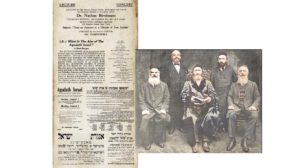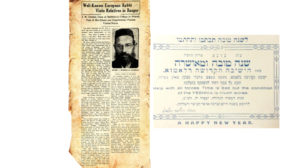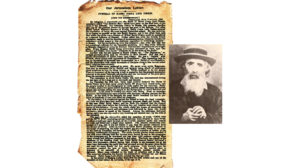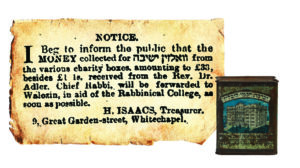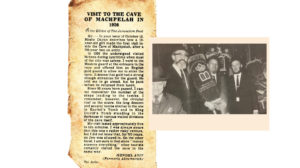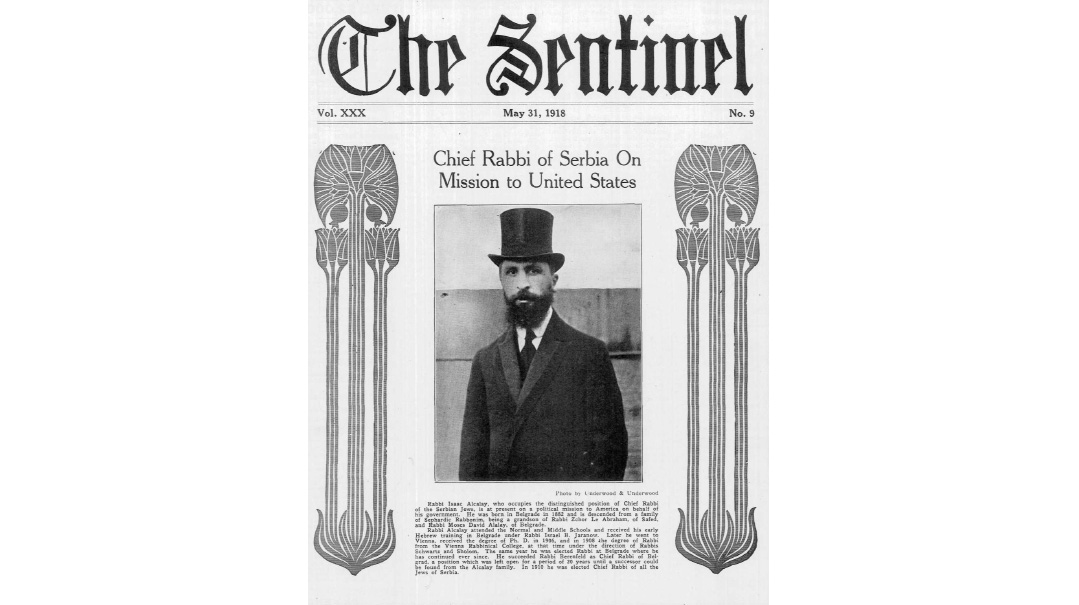Shouting for Shatnez
| June 29, 2021This was no ordinary will, for the unique individual who promulgated it had sparked a worldwide kosher textile revolution
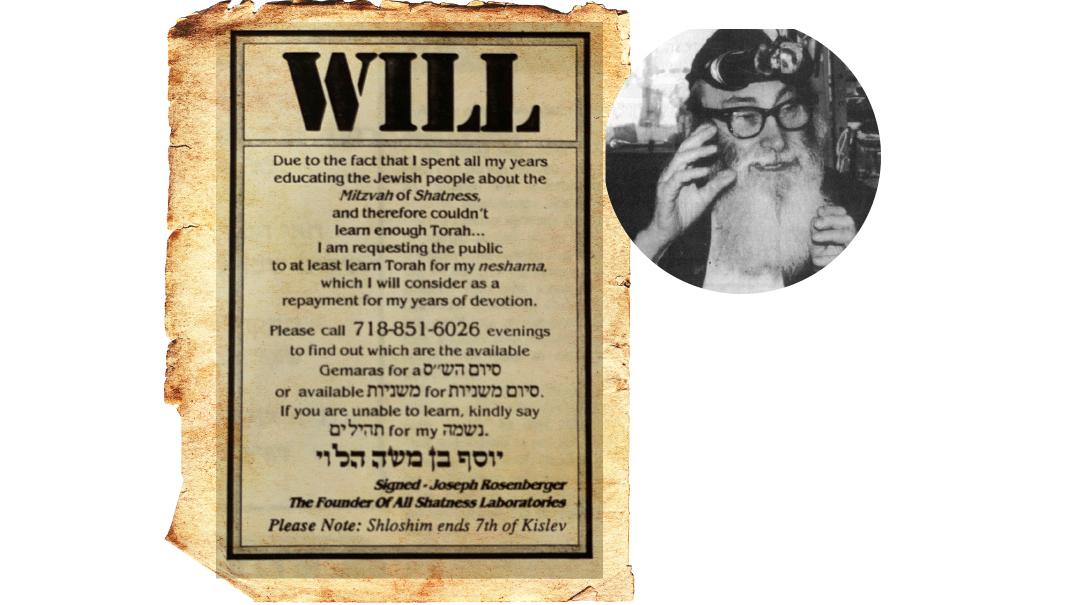
Title: Shouting for Shatnez
Location: Williamsburg, New York
Document: Advertisement
Time: 1990s
Wills aren’t generally published in the local papers anymore, nor do they call on the general public to study Shas on behalf of the deceased while apologizing for his not becoming a talmid chacham. Yet this was no ordinary will, for the unique individual who promulgated it had sparked a worldwide kosher textile revolution.
Joseph Rosenberger (1911–1996) had been raised in an Oberlander home on the outskirts of Vienna. Following the Anschluss with Nazi Germany on March 12, 1938, he spent a torturous year in the Dachau concentration camp before making his way to the US.
Discovering that technological advances and mass marketing had made traditional methods of shatnez checking obsolete in his new home, Mr. Rosenberger set out on twin crusades: research new methods for shatnez detection, and raise awareness and enthusiasm among the public for what had become a lost mitzvah. Under the aegis of the nascent Agudas Yisrael, and with the encouragement of its tireless leader Mike Tress, Mr. Rosenberger opened the first shatnez lab in 1941.
Finding customers would prove to be quite a challenge. Making his rounds between Minchah and Maariv to the various Williamsburg shtiblach, he unabashedly promoted shatnez checking. Though he was targeting American Orthodoxy in the 1940s, he still faced ambivalence (perhaps ignorance?) at best, scorn at worst.
Mr. Rosenberger’s big breakthrough came by way of free-market competition. The Crawford’s department store agreed to have their suits tested for shatnez by Mr. Rosenberger’s lab, provided he covered the advertising. He obtained a loan to advertise in the popular Yiddish dailies. The ads drew zero responses. Discouraged, Mr. Rosenberger was ready to throw in the towel. But then Crawford’s competitors came to him, demanding that they too receive the shatnez testing option. He agreed, with the sole stipulation that they pay for advertising. The New York papers were soon inundated with ads for the Williamsburg shatnez lab.
Technological advancements, synthetic fabrics, the shift of factories to the Far East, and many other challenges were overcome through ensuing decades. In the interim, a cadre of young talmidim were trained by “Mr. Shatnez,” as he had come to be affectionately known, and they opened shatnez labs in cities throughout the United States, Canada, and later Europe and Israel. Mr. Rosenberger even assisted the Eidah Hachareidis in the establishment of a shatnez lab in the 1960s.
Educating the masses on the importance of the mitzvah of shatnez remained his constant mission. To that end, he employed humorous caricatures in the press, speaking in shuls, and visiting day schools around the country to bring the message directly to the children. With his passing in 1996, his legacy became clear: this simple, modest, unassuming tzaddik had the rare distinction of single-handedly bringing about mass observance of a mitzvah among the entire Jewish People.
The Mitzvos Magazine
Busy as he was promoting shatnez testing, Mr. Rosenberger was also involved in numerous other mitzvah endeavors. He pioneered a children’s magazine with halachos and related stories that was distributed in day schools. He was among the early founders of Hatzalah, and also contributed what he could from his meager earnings to yeshivah education. His home was a beacon for recent immigrants and unfortunate souls, offering warmth, a good meal, and an inviting environment.
Important Allies
One of those who helped advance the “shatnez revolution” was the legendary Rabbi Herbert S. Goldstein of Manhattan’s Institutional Synagogue, assisting with fundraising and using his network to connect Mr. Rosenberger with influential Orthodox Jewish organizations, such as Agudath Israel, the Orthodox Union, and Young Israel.
(Originally featured in Mishpacha, Issue 867)
Oops! We could not locate your form.
